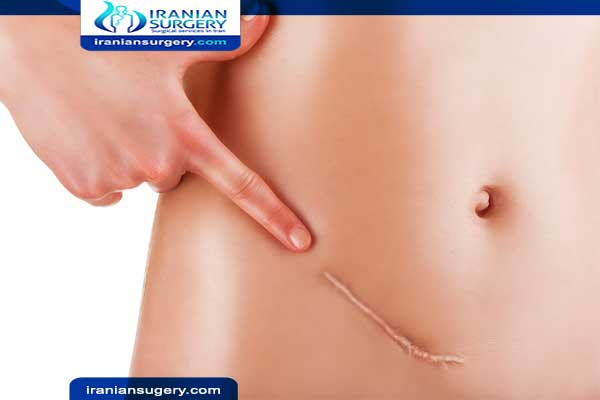Liposuction scar
How long does it take for liposuction scars to fade?
Do Vaser liposuction scars go away?
What is the best treatment for scars after liposuction surgery?
Small incisions need to be made in parts of the body where then cannula will need to be inserted. These tiny incisions are only about .5 – 1cm long, allowing the numbing solution to infiltrate under the skin and the ultrasound probe to enter.
These incisions are so tiny they heal quickly usually requiring no stitches.
The number of incision sites made during the cosmetic procedure will depend on how much fat needs to be removed and the area of the body treated.

Read more about : Tips for fast recovery after vaser liposuction
Read more about : Tummy tuck scars after 5 years
To minimise noticeable scars post-liposuction, the tiny incision sites are typically placed in discrete areas of the body. For example, in the belly button, inner thighs or along the bikini line so they can be camouflaged by underwear.
Read more about : The German patient saved $ 14,000 by choosing Iran over Germany to have liposuction and abdominoplasty surgery.
Read more about : How to massage lumps after liposuction?
Read more about : How to hide blepharoplasty scars?
Read more about : Liposuction surgery in Iran at HIGH quality hospital
Read more about : Tips for fast recovery after vaser liposuction
Read more about : Is liposuction safe?
Visibility of scars
The amount of liposuction scarring depends on a number of factors:
. Individual genetics
. Surgical technique used
. Patient’s skin pigment (scars from larger incisions tend to stand out more on dark-pigmented individuals)
The most common scarring problem resulting from liposuction is dyschromia (discoloring), which can take two forms: hyperpigmentation (darkened scars) and hypopigmentation (lighter, bleached-out scars). More rarely, these types of liposuction scars may develop:
. Atrophic (sunken below the skin’s surface, due to the loss of fat or muscle around the incision)
. Hypertrophic (slightly raised above the surface, though this may decrease over time)
. Keloid (hard, raised, irregular-shaped scars, usually with a smooth top and a pink or purple color)
To ensure you have realistic expectations, it’s important to understand that while the incisions are tiny, you may notice a small scar at the targeted sites.
If you are fair skinned, it’s unlikely you’re going to have any issue with scarring. Once the incision area has healed, it typically turns pink and then white; blending into the skin.
If you are dark skinned or Asian, the tiny scar may be slightly more visible as they tend to become a little darker.
It’s also important to inform your cosmetic practitioner or plastic surgeon if you have a tendency towards Keloid scarring. Keloid scars are often raised and have a darker and red appearance than the surrounding skin. These can occur after any type of skin injury whether that’s an accidental cut to the skin or incisions from cosmetic procedures such as liposuction or tummy tuck.
Read more about : Tummy tuck scars after 5 years
Read more about : How to get rid of fluid after liposuction?
Read more about : Does liposuction hurt?
Read more about : Lipomatic
Read more about : what causes rippling after liposuction?
Read more about : Nerve pain after liposuction
Read more about : Bbl in Iran
Treatment and Appropriate post-surgery wound care
After the surgical procedure, you’ll be provided with advice that can help reduce your recovery time, help prevent the occurrence of keloids and improve the overall results of liposuction.
Depending on your cosmetic surgery treatment, your wound care may include:
. Use of compression garments to aid recovery and reduce swelling and bruising;
. Scar treatments including a combination of ProFractional laser, Platelet-rich plasma (PRP), Dermal Fillers and fat transfer;
. Proper wound care instructions to prevent opening
. Use of recommended gel products to help fade and flatten the scars
. Skincare regimen advice
. Dietary advice to help aid wound healing.
. To speed up the process of liposuction scar healing, we also recommend a combination of Silicone Sheeting and Hyper-Heal Cream, applied about one week post-op. For discolored scars that have already been established, your best bet is to use a .2mm derma roller with daily application of Hyper-Heal Cream.
. The DEKA laser technology is well-known for its skin repairing effects, especially in scar removal. The practitioner uses the DEKA laser device strictly on the affected area, destroying the scar tissue and generating new collagen production and thus, the formation of a new, healthy-looking layer of skin. DEKA laser technology, is minimally invasive, painless, quick and offers satisfying cosmetic results.


